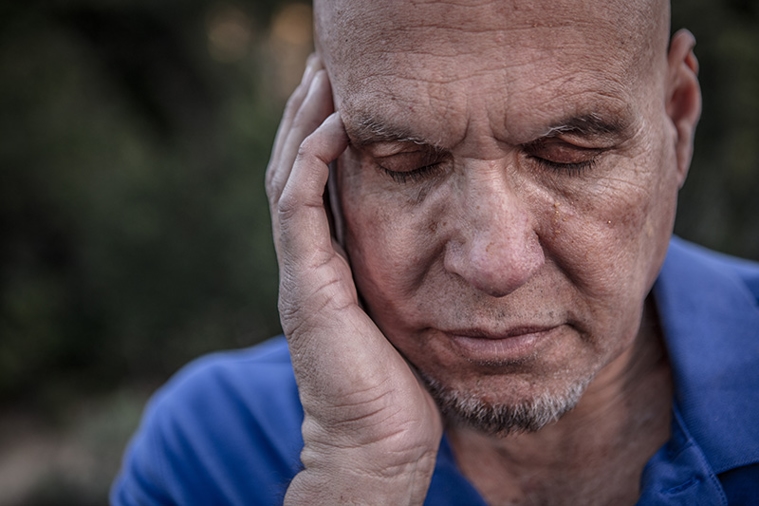Recognizing and Responding to Mental Health Red Flags
May 6, 2024

Chances are, someone you know is struggling with mental health problems, but they haven’t told you — or anyone else — about it.
Many people with clinical-level disorders aren’t getting the help they need, experts say, because they’re reluctant to confide in friends or family or seek professional help. As a result, they risk avoidable consequences, from a generally lower quality of life to declining work performance, that can cost them their jobs and lead to substance abuse, homelessness and suicide.
It doesn’t have to be that way: Learning to recognize the signs of deteriorating mental health is a step toward ensuring that people don’t fall through the cracks of the mental healthcare system. It can enable you to not only support your children, other relatives and friends when they’re having problems, but also to take better care of yourself.
“Early intervention can help reduce the severity of an illness and interruptions in quality of life,” the American Psychiatric Association (APA) says. “It may even be possible to delay or prevent a major mental illness altogether.”
Often, warning signs appear early in life. Statistics show that 50 percent of people with mental illnesses develop symptoms by age 14, and 75 percent do so by the time they’re 24. According to the APA, mental illnesses such as schizophrenia or bipolar disorder appear over time, with small changes that seem to gradually build up.
Growing Concerns Over Mental Health
Mental health concerns have surged in the U.S. and around the world since the COVID-19 pandemic, partly because of social distancing requirements that exacerbated what U.S. Surgeon General Vivek Murthy calls an “epidemic of loneliness.”
About 20 percent of U.S. adults had a mental illness before the pandemic, according to a White House report in 2023, and about half of American women and a third of men said the crisis had affected their mental health.
Among teenagers, 44 percent of high schoolers said they felt sad or hopeless in the past year, according to the U.S. Centers for Disease Control and Prevention. In the first year of the pandemic, the number of mental health-related emergency room visits for teens climbed 31 percent. And while poor mental health is a common problem for youth, it is reported far more often by LGBTQ+ youth, according to the CDC. In 2021, 69 percent of LGBTQ+ youth reported feeling persistently sad and hopeless. For heterosexual youth, that figure was 35%.
Red Flags in Mental Health
If you’re concerned about someone in your life, here are some signals identified by experts including the American Academy of Pediatrics and the American Psychological Association to pay attention to:
- Teens
- Noticeable changes in sleep, weight or eating habits
- Losing interest in activities they normally enjoy
- Canceling plans with close friends without explanation
- Worsening performance in school
- Thoughts or worries they can’t overcome
- Drug or alcohol abuse
- Signs of self-harm such as cuts, burns or bruises
- Making a new set of friends you haven’t met before
- Sexual activity that seems new or more intense
- Adults
- Sleep, appetite or mood changes
- Withdrawing from friends or social groups
- Difficulty performing familiar tasks at work
- Difficulties with thinking, concentrating or logical reasoning
- Increased sensitivity
- Apathy
- Nervousness
Starting a Conversation on Mental Health
Depending on the behaviors you observe, the next step may be talking with the person you’re worried about, which can feel awkward or intrusive — particularly with peers. You may worry you don’t have the skills you need to help. However, you don’t need special training for this — often, just letting an individual know you care and are there for them can be an important first step. Try these tips to broach the topic:
- Signal that you’re open to conversations about mental health. Think of it the way you do physical health and be willing to talk about your own mental health first. Talking about times you’ve felt anxious, depressed or stressed out may be enough to get the conversation started.
- Trust your instincts. If you think someone is struggling with mental health concerns, talk with them privately. Start by letting the person know that you care and then follow up with something you’ve noticed, such as, “You seem more stressed than normal, how are you doing?”
- Pick a comfortable setting and a natural approach. You can suggest grabbing lunch, a pickup game of your favorite sport, or just send a text message asking “what’s up?"
- Pay attention to the person’s response. If they hesitate or express concern about burdening you with their problems, reassure them in your own words that you care, want to support them and are willing to listen. If you think they might be more comfortable talking with someone else, offer to help them connect.
- Sometimes, just being there is enough. Don’t worry if you don’t have the right words. Letting your friend or loved one know that you care is a big step, and it may make them feel more comfortable to turn to you in the future.

